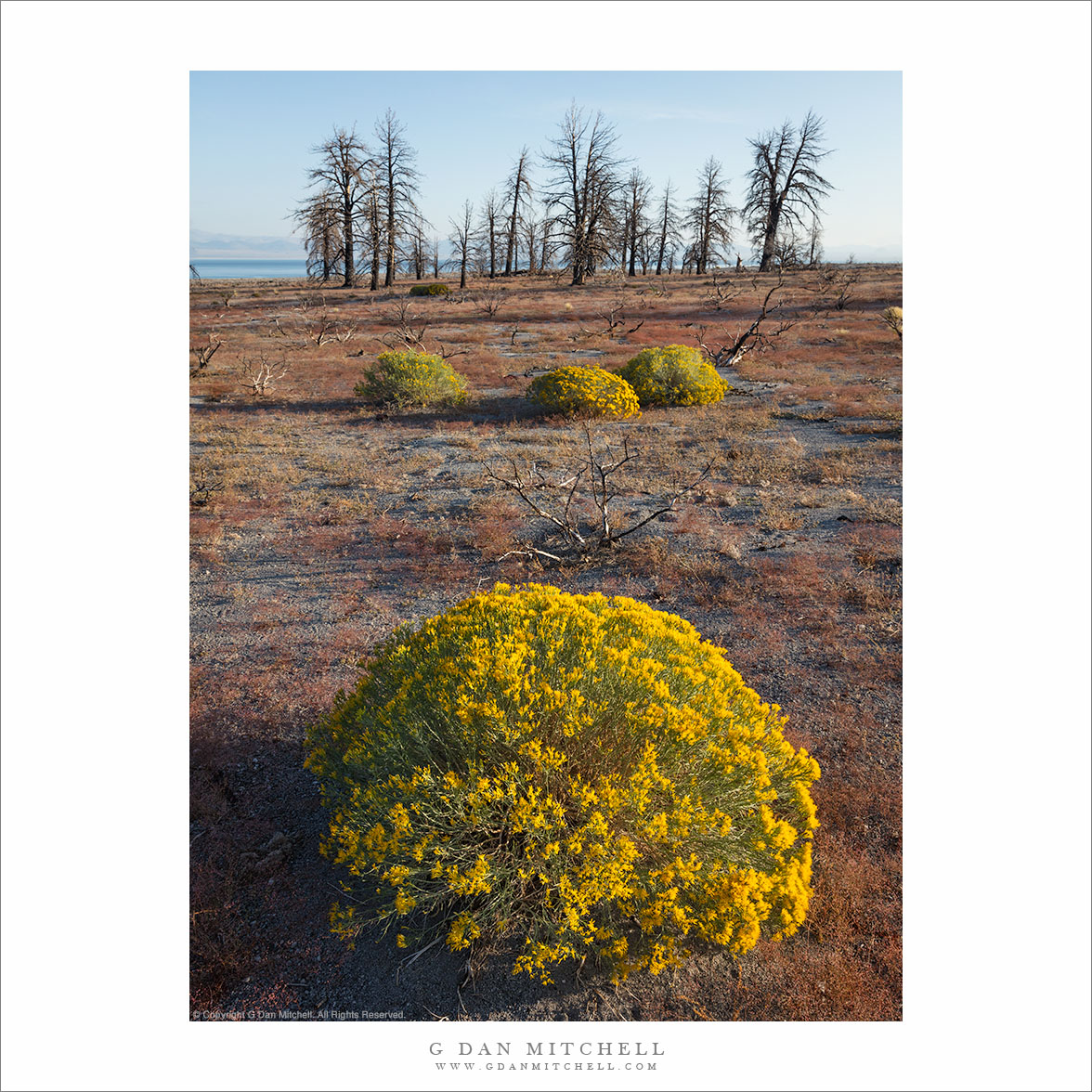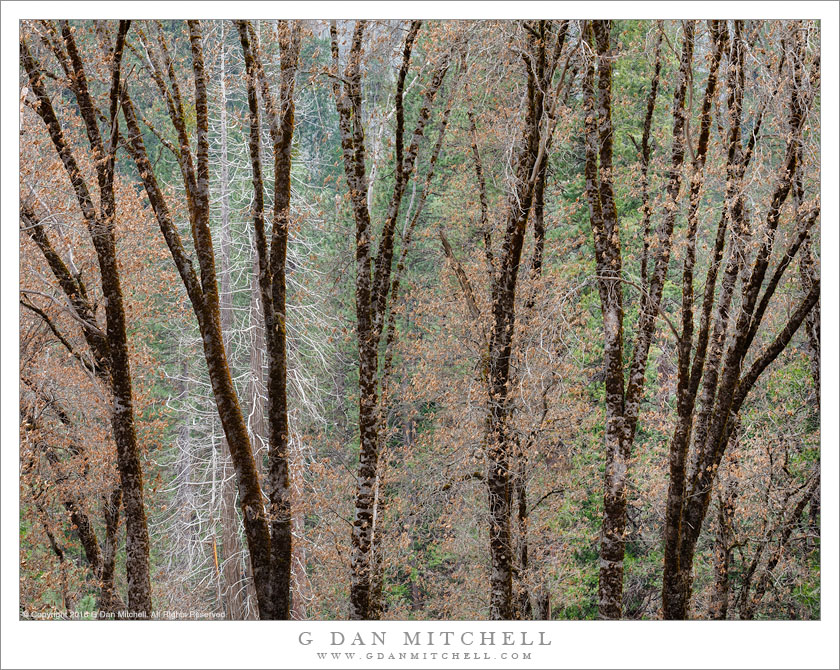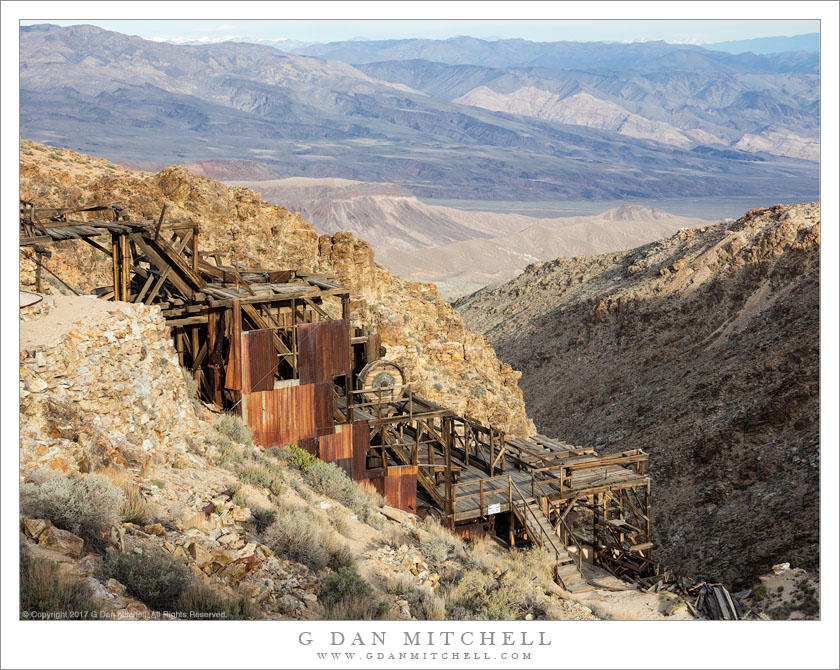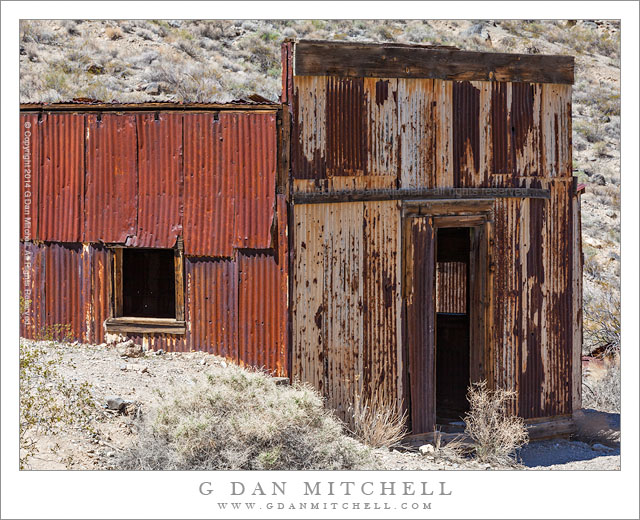
On a late-September morning I headed out into country near Mono Lake, eventually turning off the two-late highway to follow a random gravel track that traced the edge of an extraordinarily large ponderosa pine forest. This area within sight of Mono Lake was burned in a forest fire years ago, and there are still lots of dead trees around the fringe of the forest. The stark beauty of the skeletal trees intrigued me, and I eventually found a place to stop and explore a bit.
This is an austere landscape. Even where the trees still grow there is a lot of space between them, likely due to the dry environment. In many places there is only sagebrush country, and in this spot the sandy soil supports even less vegetation. But it the middle of this — and against the backdrop of those dead trees — rabbitbrush plants were in full, colorful bloom.
G Dan Mitchell is a California photographer and visual opportunist. His book, “California’s Fall Color: A Photographer’s Guide to Autumn in the Sierra” is available from Heyday Books, Amazon, and directly from G Dan Mitchell.
Blog | About | Instagram | Flickr | Facebook | Threads | Post | Email
Links: Articles, Sales and Licensing, my Sierra Nevada Fall Color book, Contact Info.
Scroll down to share comments or questions. (Click post title first if viewing on the home page.)
All media © Copyright G Dan Mitchell and others as indicated. Any use requires advance permission from G Dan Mitchell.





